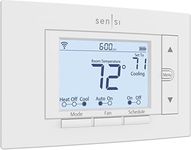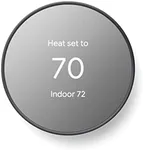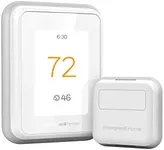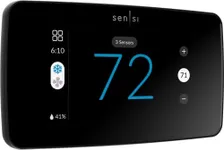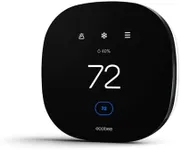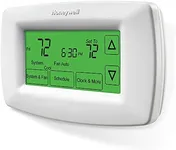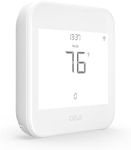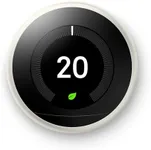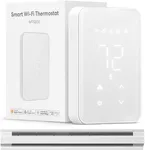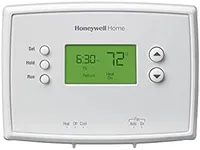Buying Guide for the Best Room Thermostat
Choosing the right room thermostat can significantly improve your home's comfort and energy efficiency. A thermostat helps regulate the temperature in your home by controlling your heating and cooling systems. When selecting a thermostat, it's important to consider various features and specifications to ensure it meets your needs and preferences. Here are some key specifications to consider and how to navigate them.TypeThermostats come in different types, including manual, programmable, and smart thermostats. Manual thermostats require you to adjust the temperature settings yourself, which can be less convenient but are typically more straightforward to use. Programmable thermostats allow you to set schedules for different times of the day, helping you save energy by automatically adjusting the temperature when you're not home. Smart thermostats offer advanced features like remote control via smartphone apps, learning your schedule, and integrating with other smart home devices. Choose a type based on your lifestyle and how much control and automation you desire.
CompatibilityCompatibility refers to whether the thermostat will work with your existing heating and cooling system. It's crucial to check if the thermostat is compatible with your HVAC system, whether it's a single-stage, multi-stage, or heat pump system. Some thermostats are designed to work with specific types of systems, so make sure to verify this before purchasing. If you're unsure, consult your HVAC system's manual or contact a professional.
User InterfaceThe user interface of a thermostat includes the display and controls. A clear, easy-to-read display and intuitive controls can make a big difference in how user-friendly the thermostat is. Some thermostats have touchscreens, while others use buttons or dials. Consider how easy it is to navigate the settings and whether the display is visible in different lighting conditions. If you prefer a more modern look and feel, a touchscreen interface might be more appealing.
Energy-Saving FeaturesEnergy-saving features can help reduce your energy bills and environmental impact. Look for thermostats with features like adaptive learning, which adjusts the temperature based on your habits, and geofencing, which uses your phone's location to adjust the temperature when you leave or return home. Other features to consider include energy usage reports and reminders to change air filters. These features can provide insights into your energy consumption and help you make more informed decisions.
ConnectivityConnectivity refers to the thermostat's ability to connect to other devices and networks. Smart thermostats often offer Wi-Fi connectivity, allowing you to control them remotely via a smartphone app. Some models also integrate with smart home ecosystems like Amazon Alexa, Google Assistant, or Apple HomeKit, enabling voice control and automation with other smart devices. If you have a smart home setup or plan to create one, consider a thermostat with robust connectivity options.
InstallationInstallation can vary depending on the type of thermostat and your existing HVAC system. Some thermostats are designed for easy DIY installation, while others may require professional installation. Consider your comfort level with electrical work and whether you prefer to install the thermostat yourself or hire a professional. Additionally, check if the thermostat requires a C-wire (common wire) for power, as not all homes have this wire available.


